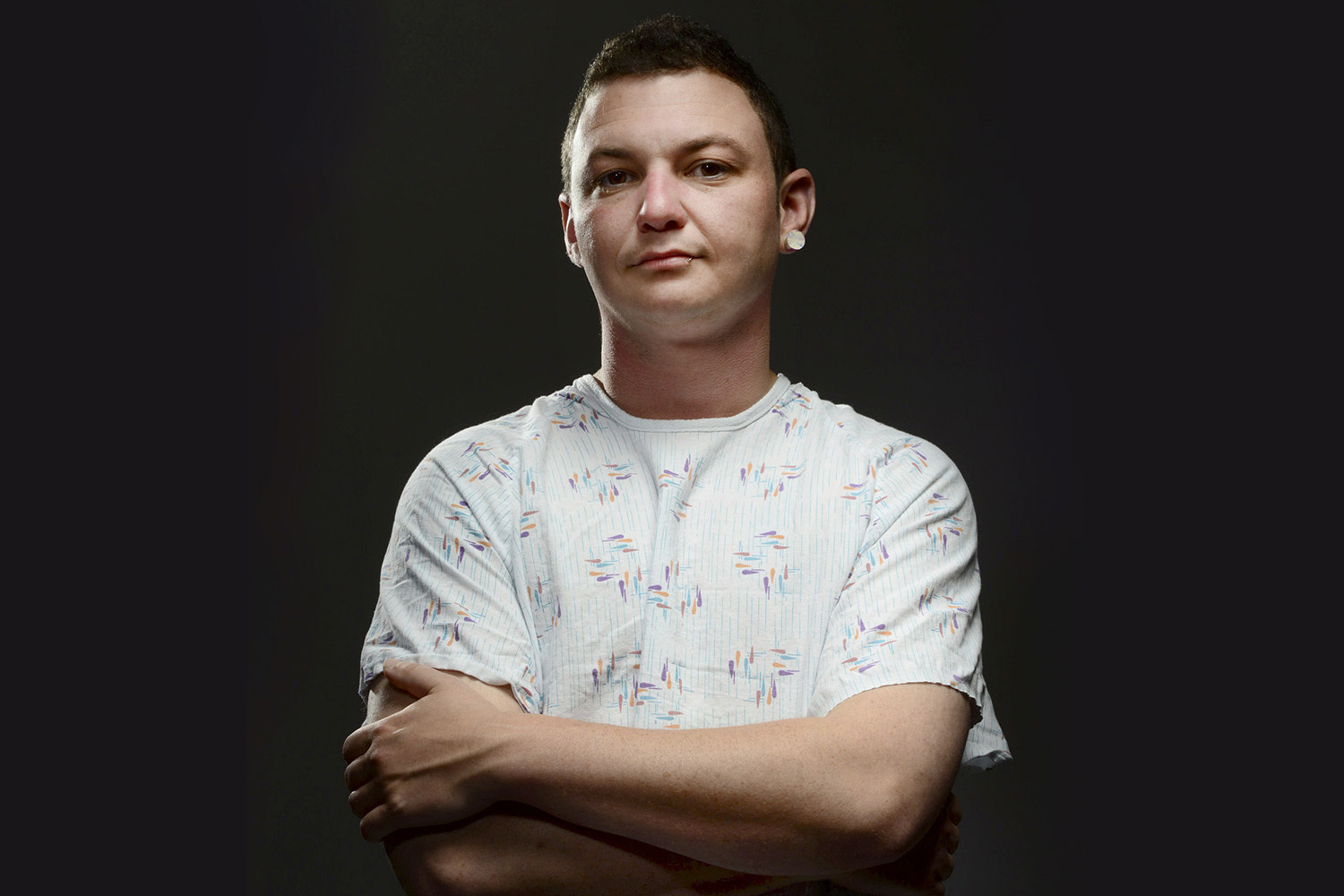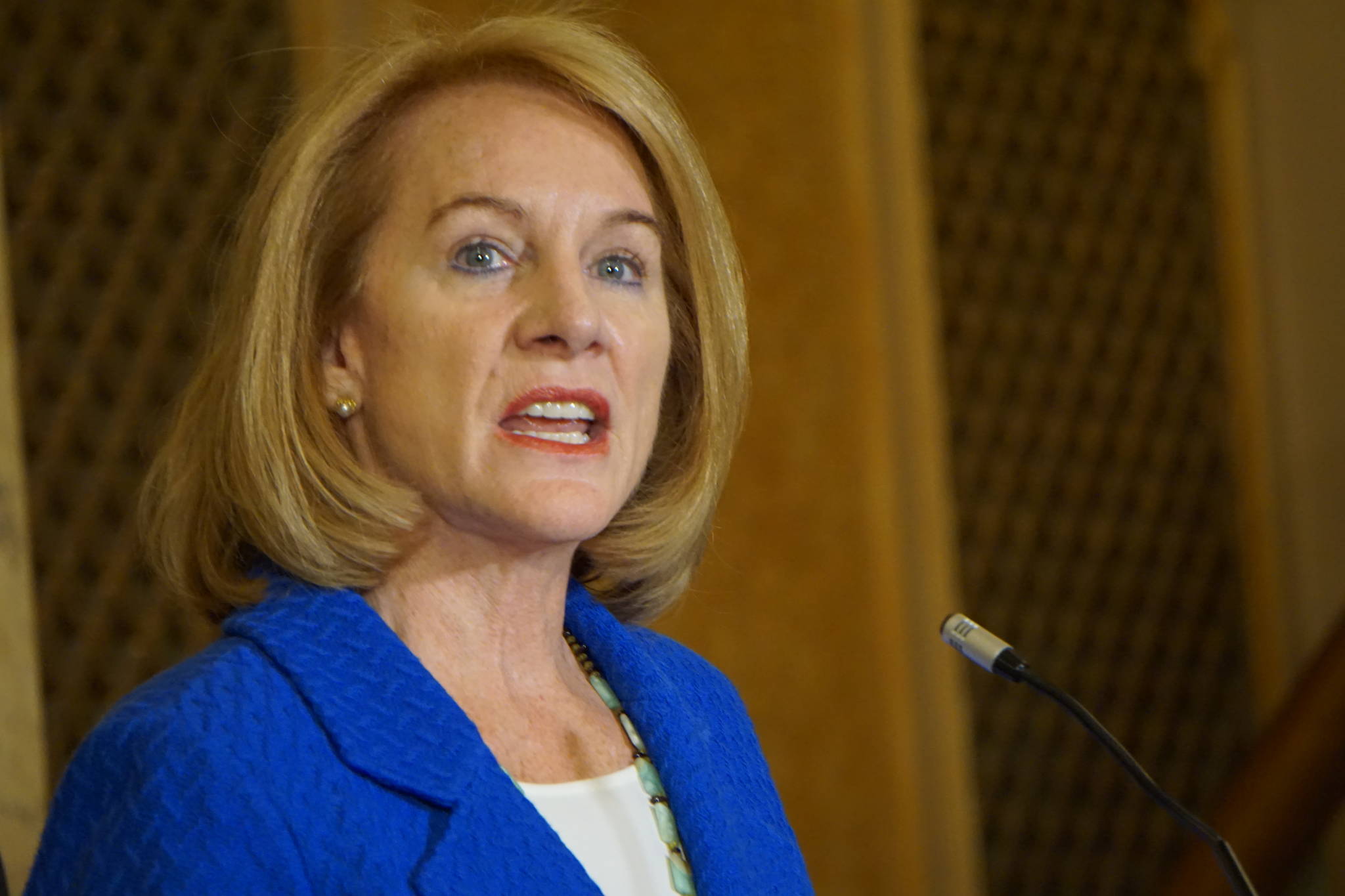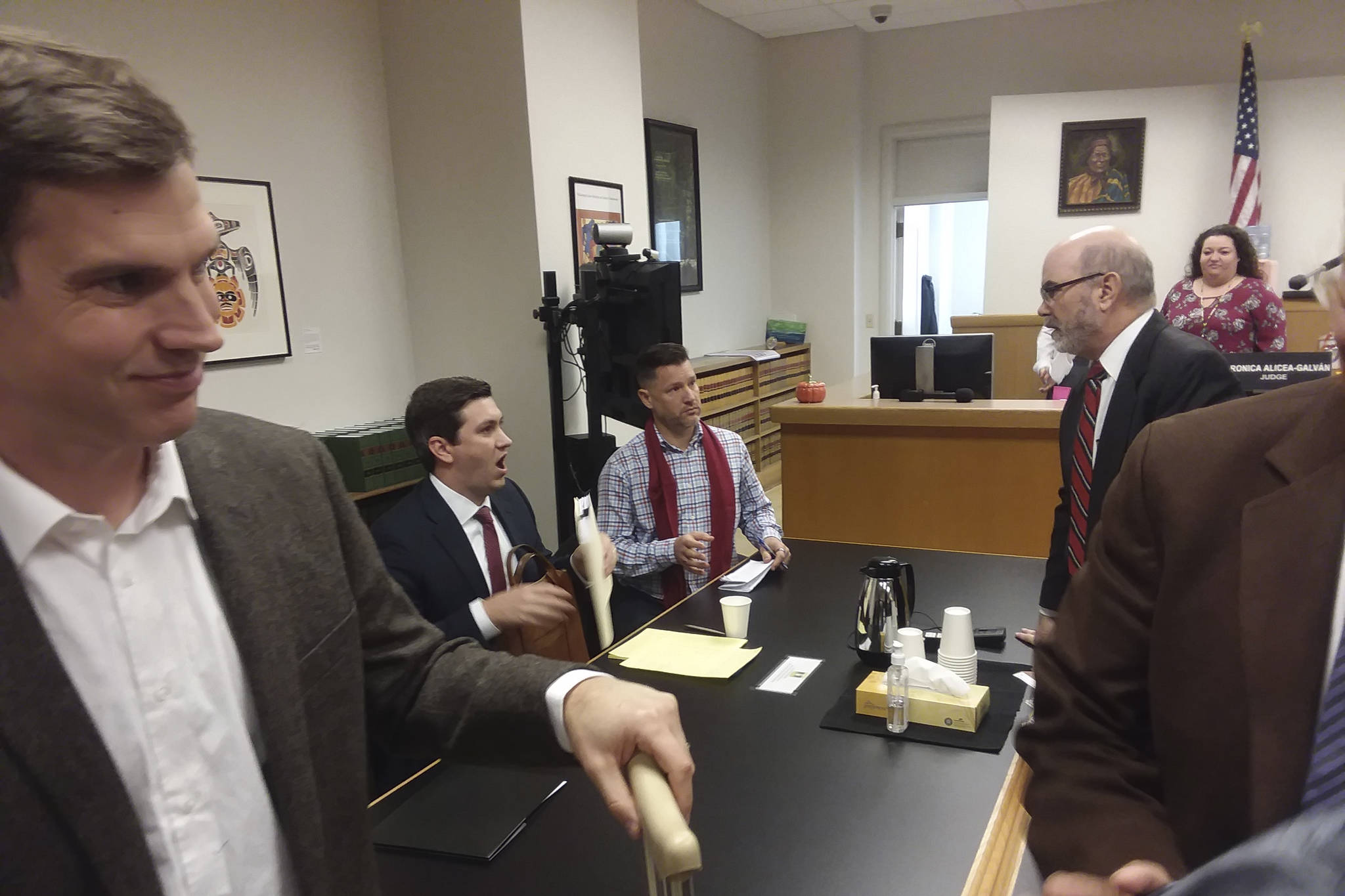It’s the morning of April 20, and I’m driving my friend Linus down across the state line into Portland for surgery. We’re on I-5 headed south, listening to NPR and making small talk.
Linus is trans. We’ve been buddies since college, where we rowed together on co-ed crew. For years I thought he was just a butch woman: short hair, a bro-ey manner, lots of tattoos.
One day, he came out to me as a man. I balked, insisting that I’d keep calling him by the name I’d always known him by. I resented having the contours of a known and comfortable reality suddenly redrawn. I didn’t want to re-catalogue him in the filing system of my brain.
In other words, I was a bigot. Not in the obvious sense of actively despising trans people, but in the banal sense of not wanting to be bothered. But Linus was patient, tolerating me until I became tolerable, until I called him by the correct name and pronouns. Hence our continued friendship; hence my butt in the seat and my hands on the wheel as we drive toward Portland for his chest-reduction surgery.
When I ask Linus how he’s doing, he says he feels like an athlete before a big game. “You sort of feel nervous beforehand, but you just want to get it done,” he says. “Honestly, [I feel] a little apprehensive, because it’s been challenging to get here. I’m still slightly worried that something’s going to go wrong”—that some unforeseen bureaucratic intervention will somehow derail the surgery at the last minute. “But overall, [I’m] pretty psyched up, pretty amazed that this is actually happening.”
He has good reason to be amazed, considering how much work it took for him to get here. Five years ago, Linus came out of the closet as a transgender man and began testosterone injections. “Excuse me while I go stab myself,” he’d sometimes say before disappearing into his bedroom to inject. As a result, his voice gradually lowered and his five-o’clock shadow darkened. A year or two later, he talked to a surgeon about the possibility of chest surgery, but he wasn’t insured and didn’t have the $8,000 the procedure costs lying around. So he was stuck with what he calls “moobs,” or man boobs.
Two recent events changed that. One was the implementation of the Affordable Care Act, aka Obamacare, which expanded Medicaid, the federal health-insurance program for poor people, to include Linus. The other was a watershed ruling by the state insurance commissioner last year that made it illegal for health-insurance companies in Washington to discriminate against transgender patients. Before that, trans exclusions were the industry norm.
Those two events made it possible for Linus to get chest surgery. But they didn’t make it easy. The Kafkaesque nightmare that is the American health-insurance system is an even greater tangle of bureaucratic knots for patients seeking gender transitional care. For instance, Linus had to get a psychosocial evaluation letter (or a “sanity note,” as he calls it) from a psychologist affirming that he is indeed transgender, does indeed have a “medical necessity” for surgery, and doesn’t have other unmanaged physical or mental-health issues. This was his second sanity note; the first was for his injectable testosterone, which is prescribed to him by a “really awesome, really trans-competent” doctor.
Contrast that with the requirements for cisgender (that is, non-transgender) people who are able to access similar surgeries without similar oversight. One example: reduction surgery for cisgender women whose breasts result in chronic back pain. Washington Medicaid spokesperson Lisa Humphrey confirms that such surgeries, which are almost identical to Linus’ top surgery, don’t require a sanity note (though she says such a comparison is “apples to oranges”).
Linus isn’t thrilled that he has to prove his mental stability just because he’s trans. “I’ve managed my health care my entire adult life,” he says. “If it was just a letter saying that I was trans, I’m still not crazy about it, but it’s just really insulting that I had to get a letter saying that I was competent.”
And then there’s the interstate car odyssey. Linus is a Medicaid patient, meaning that his insurance can pay only a fraction of the market-rate cost of the surgery. Combine that with the paucity of qualified surgeons (partially a result of the fact that insurers only recently started paying for these surgeries), and the pool of doctors available to treat Linus shrinks dramatically. When I asked Amy Blondin, another state Medicaid spokesperson, for a list of surgeons who do top surgeries and accept Medicaid, she laughed. “I wish we had that information,” she said. “That would make our lives a lot easier.”
So it’s on patients to locate a surgeon. Linus lives within walking distance of a couple of Seattle’s major hospitals, but the closest qualified doctor he could find was in Portland. And so we drive.
Hours later, Linus and I are inside the hospital in Portland, in the pre-surgery prep ward. There are white tiles above and below, white fluorescent lights, and a cloth privacy screen that separates us from the rest of the ward. Beside us sits a tricked-out hospital bed, hoses and tubes spiraling out in every direction. A flat mass of clear plastic tubes is gently hissing on the bed; it looks like a pool toy, but someone in an official-looking white uniform tells us that it’s actually a hot-air blanket to keep Linus cozy until the scalpel comes out.
Linus begins to strip in front of me. I ask if he wants me to step out. “You’re good, dude,” he says.
He sheds his shirt and shorts, then peels a white, elastic tube off his chest. It’s so tight it leaves red marks along his ribcage. Its function is—or rather, has been—to flatten Linus’ chest.
On his stomach is a tattoo of crossed rowing oars, and from his shoulder a bright orange octopus stares at me. Its eye undulates with each arm motion, as Linus removes the rest of his clothes, stuffs them into clear plastic bags, and dons the surgery smock and rubber-bottomed slippers someone gave him. At his request, I tie the smock together in the back.
Through the curtain come the voices of a coterie of MDs and RNs and CNAs. They pepper Linus with questions. “When is the last time you ate or drank?” “Do you have any allergies?” “Do you have any metal in your body?”
He hasn’t eaten in 12 hours. Hasn’t drunk in three. All his piercings are in my pocket, in a Ziploc baggie. A nurse explains that they’ll be using an electric cauterizer to sear his skin shut. Metal in his body could cause it to discharge in the wrong place and potentially burn him.
In the car on our way down, I asked Linus what he’s feeling most. Fear? Anticipation? Relief? He shook his head. “Mostly it just feels surreal,” he said, adding that the only thing he was still worried about was whether he’d be forced to take a pregnancy test. Apparently, this test is de rigueur for women prior to any surgery, because of the risk of an anesthetic causing developmental problems in a fetus.
Not being a woman, Linus found this degrading. “It’s not a deal-breaker,” he said, but it would be nice to begin such a vulnerable process as surgery by not being reduced to “an ovary with legs” by his doctors.
It turned out not to be a big deal. At the beginning of his intake they offered, he declined, they deferred.
Now, reclined in his hospital bed beneath a blanket of hot-air tubes, he seems pretty relaxed for someone about to go under the knife. Seems, and is. Because from Linus’ perspective, the hard part is over. He doesn’t have to fight his way through the system anymore. After all that red tape and indignity, getting sliced open like a fresh-caught fish is nothing.
The surgeon, a youngish woman with black hair and disarming candor, breezes in. She explains how the surgery will proceed, step by step, and answers his questions. They talk about resizing his nipples and how many days he’ll need to have tubes hanging out of his body to drain errant fluid. With a black marker, the doctor begins tracing lines across his chest to guide her knife later. She signs with her initials near his collarbone.
Another doctor replaces her, the anesthesiologist, a balding, middle-aged man with a soft voice. He describes how they’ll first knock Linus out by putting drugs in the IV that’s plugged into his left arm, but during the surgery itself a breathing tube will be inserted down Linus’ throat that will pump in oxygen and sleeping gas. There also may or may not be a catheter when he wakes up, at the surgeon’s discretion. Linus emphasizes his strong preference that there not be.
Suddenly it’s time to go. Two staff members wheel Linus’ gurney out of our curtained cubicle and down the hall. I follow. When it’s time for us to part ways, Linus and I attempt a complicated high-five, and I say, “I’ll see you in a few hours.”
And then they wheel him down the hallway.
It’s fair to say that Linus would not be going under the knife right now if not for the efforts of a woman named Lisa Brodoff. She is the supervisor of the Ronald A. Peterson Law Clinic at Seattle University, which in the early 2000s represented Medicaid patients who were seeking gender transitional surgery. At that time, she says, “Any surgeries were covered [by Medicaid] as long as you could prove that they were medically necessary—which of course required all kinds of proof.”
So her students rolled up their sleeves, gathered evidence of the surgery’s efficacy, and ultimately forced Medicaid to pony up.
“One of our clients,” says Brodoff, “literally, this surgery saved his life … He had been on Social Security disability, had had lots of issues with alcohol and drug issues, couldn’t work, depression. After the surgery and our advocacy, he was able to go back to work, had a family, became a taxpaying member of society, did very, very well. And was happy.”
His struggle wasn’t unique. The stress of fitting neither into one’s body nor with one’s peers gradually wears a person down, like water running down a slope. The medical term for the stress of this mismatch is “gender dysphoria.” Whereas being trans is just a fact about someone, like being white or tall, gender dysphoria is a recognized mental illness, like PTSD or anxiety. As Tristan, another Seattle trans man, put it, “Almost every interaction I had, I had to come out. It’s like, ‘Are you a boy or a girl?’ And I’m like, ‘I don’t want to have this conversation every day.’ ”
That stress has a cost. According to the National Gay and Lesbian Task Force and the National Center for Transgender Equality, 41 percent of trans people try at some point to kill themselves, compared to 10 to 20 percent among gays and lesbians and 4.6 percent in the general population. Suicide risk is highest among trans people who can’t or don’t “pass” as cisgender, whose Otherness is on display to the world. That’s why, for the people who want them, hormones and surgery are so effective at treating gender dysphoria.
But efficacy and politics rarely mix. A 2005 audit of state Medicaid expenditures, which lumped “tran-sexualism” surgeries together with cosmetic breast enhancement, reported that the government spent $70,998 over the course of several years on surgeries for one trans client. (Total annual Medicaid spending in Washington state alone was $5.6 billion in 2000.)
Citing those expenditures, conservatives in the state and national legislatures threatened to bring down the hammer on Medicaid for gender transition. In response, state Medicaid administrators created a rule categorically denying coverage for trans surgery, though they would still cover therapy and hormone treatment. The ban was based on a report issued by Hayes, Inc., a medical-research company contracted by the state, that claimed that the surgeries were “experimental” and therefore not covered. “We understand this is a very real condition for some people,” the state Medicaid chief told The Seattle Times in 2006. “We just think psychotherapy and hormone treatment is a better way to go.”
Brodoff and company spent more than a year exhausting Medicaid’s internal appeals process, losing every step of the way, until they finally got to make their case in an actual courtroom in 2012. Judge Chris Wickham agreed with the argument put forth by Brodoff’s students—sort of. The case ended up turning on the highly technical question of whether the agency could plausibly have believed, when it issued the surgery ban in 2007, that gender transitional surgeries are experimental. Wickham thought they could have, so he didn’t strike down the rule. However, the judge noted in his decision that “New evidence developed after the 2007 rulemaking suggests that there is no longer a basis” for excluding coverage of gender transitional surgery.
The ruling wasn’t the slam dunk that Brodoff had hoped for, but the judge’s non-binding comments did give her group a powerful tool with which to goad medical-insurance gatekeepers. So they reached out to other groups that were working on similar trans health issues, including the Gender Justice League, Ingersoll Gender Center, Legal Voice, the Pride Foundation, and the ACLU.
Calling themselves the Coalition for Inclusive Healthcare, those groups successfully petitioned state Insurance Commissioner Mike Kreidler to put the kibosh on the blanket exclusion on trans health care that most insurers had at the time. Kreidler issued a management bulletin telling private insurance companies that “broad exclusions of coverage on the basis of gender identity … [or] denial of a medically necessary service on the basis of gender identity is prohibited under Washington state law.” The insurance board for state employees followed suit, and then state Medicaid did too. The Coalition kept the pressure on during Medicaid’s public rulemaking process. They finally secured “a very good coverage rule,” says Brodoff. “It may not have had everything we wanted, but it’s very broad.”
Sitting on a bench outside the hospital, my phone rings. It’s the surgeon. Linus is fine, everything went according to plan, come on over in about an hour.
I do.
When the nurse wheels Linus’ gurney into his overnight room, my friend is groggy but cogent. I ask how he feels.
“Fantastic,” he says. “I was pretty loopy for a while. I’m feeling much more cognizant—about as lucid as one can be in this situation.”
He describes what he recalls of the episode. “After you left,” he says, “[surgery staff] started giving me the sedatives and I was just kind of chilling, and then I remember the oxygen mask going on my face.” And then nothing. “The next thing I remember is waking up in recovery. I was pretty dramatic,” he says. “I was like, ‘This is done! After 16 years! This is fucking awesome!’
“And they were like, ‘Please don’t swear so much. Yeah, this is awesome.’ ” He snickers. “They were really nice. … When I was younger, I remember thinking, ‘Wow, I wish my boobs would just disappear.’ And I just thought, ‘Well, I might as well wish for the fuckin’ moon.’ And now I did it,” he says, beaming.
How’s the pain?
“Before the morphine, the pain wasn’t terrible,” he says. “Kind of like, I dunno … a bad bike crash. Does that make sense? You’ve got some soreness, you’ve got some sting. But nothing unbearable.”
With a little coaxing, my 31-year-old friend becomes philosophical. “It’s kind of weird. I was thinking about how puberty starts at maybe 14 or 15, and you go through this bullshit, and now … It’s going to be weird in that, now, my whole life, for the rest of my life—like, 16 years is only a tiny portion. That’s all done, and now I get the rest of my life not having to deal with this. And it’s awesome.”
What kind of difference will this make for you?
“It’s hard to explain, when you don’t feel connected to a part of your body,” he says. “Does that make sense? It’s a really bizarre feeling …
“It’s just, awesome,” he says. “I can get up and go to the bathroom at night and not feel weird and throw a towel over my shoulders [because of roommates]. I can just go and not worry about the fucking [chest] binder, which is really, really uncomfortable, especially in the summer. I just feel like I have more ability to move freely. And show off my tattoos, which is really nice. It just feels great… . We did a swimming trip at my work, and I swam with a T-shirt on. And I had to sort of sneak around and find a [vacant] changing room and make sure—” He stops mid-sentence.
“It’s a relief. It’s a huge relief.”








